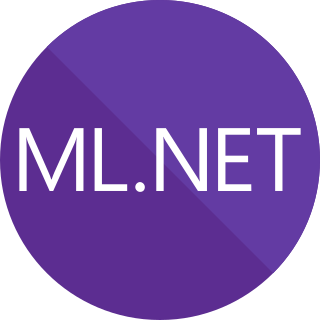Machine learning (ML) is a field of study in artificial intelligence concerned with the development and study of statistical algorithms that can learn from data and generalize to unseen data, and thus perform tasks without explicit instructions. Recently, artificial neural networks have been able to surpass many previous approaches in performance.
Unsupervised learning is a method in machine learning where, in contrast to supervised learning, algorithms learn patterns exclusively from unlabeled data. Within such an approach, a machine learning model tries to find any similarities, differences, patterns, and structure in data by itself. No prior human intervention is needed.

AppScale is a software company offering cloud infrastructure software and services to enterprises, government agencies, contractors, and third-party service providers. The company commercially supports one software product, AppScale ATS, a managed hybrid cloud infrastructure software platform that emulates the core AWS APIs. In 2019, the company ended commercial support for its open-source serverless computing platform AppScale GTS, but AppScale GTS source code remains freely available to the open-source community.
Learning to rank or machine-learned ranking (MLR) is the application of machine learning, typically supervised, semi-supervised or reinforcement learning, in the construction of ranking models for information retrieval systems. Training data may, for example, consist of lists of items with some partial order specified between items in each list. This order is typically induced by giving a numerical or ordinal score or a binary judgment for each item. The goal of constructing the ranking model is to rank new, unseen lists in a similar way to rankings in the training data.
A cloud database is a database that typically runs on a cloud computing platform and access to the database is provided as-a-service. There are two common deployment models: users can run databases on the cloud independently, using a virtual machine image, or they can purchase access to a database service, maintained by a cloud database provider. Of the databases available on the cloud, some are SQL-based and some use a NoSQL data model.
Eclipse Deeplearning4j is a programming library written in Java for the Java virtual machine (JVM). It is a framework with wide support for deep learning algorithms. Deeplearning4j includes implementations of the restricted Boltzmann machine, deep belief net, deep autoencoder, stacked denoising autoencoder and recursive neural tensor network, word2vec, doc2vec, and GloVe. These algorithms all include distributed parallel versions that integrate with Apache Hadoop and Spark.

TensorFlow is a free and open-source software library for machine learning and artificial intelligence. It can be used across a range of tasks but has a particular focus on training and inference of deep neural networks.
Apache SystemDS is an open source ML system for the end-to-end data science lifecycle.
This is a timeline of Amazon Web Services, which offers a suite of cloud computing services that make up an on-demand computing platform.
An AI accelerator, deep learning processor, or neural processing unit (NPU) is a class of specialized hardware accelerator or computer system designed to accelerate artificial intelligence and machine learning applications, including artificial neural networks and machine vision. Typical applications include algorithms for robotics, Internet of Things, and other data-intensive or sensor-driven tasks. They are often manycore designs and generally focus on low-precision arithmetic, novel dataflow architectures or in-memory computing capability. As of 2024, a typical AI integrated circuit chip contains tens of billions of MOSFET transistors.
Apache MXNet is an open-source deep learning software framework that trains and deploys deep neural networks. It aims to be scalable, allows fast model training, and supports a flexible programming model and multiple programming languages. The MXNet library is portable and can scale to multiple GPUs and machines. It was co-developed by Carlos Guestrin at the University of Washington, along with GraphLab.
The following outline is provided as an overview of and topical guide to machine learning:

Apache Ignite is a distributed database management system for high-performance computing.
Automated machine learning (AutoML) is the process of automating the tasks of applying machine learning to real-world problems.
Deep Learning Studio is a software tool that aims to simplify the creation of deep learning models used in artificial intelligence. It is compatible with a number of open-source programming frameworks popularly used in artificial neural networks, including MXNet and Google's TensorFlow.

ML.NET is a free software machine learning library for the C# and F# programming languages. It also supports Python models when used together with NimbusML. The preview release of ML.NET included transforms for feature engineering like n-gram creation, and learners to handle binary classification, multi-class classification, and regression tasks. Additional ML tasks like anomaly detection and recommendation systems have since been added, and other approaches like deep learning will be included in future versions.
Amazon Polly is a cloud service by Amazon Web Services, a subsidiary of Amazon.com, that converts text into spoken audio. It allows developers to create speech-enabled applications and products. It was launched in November 2016 and now includes 60 voices across 29 languages, some of which are Neural Text-to-Speech voices of higher quality. Users include Duolingo, a language education platform.
Animashree (Anima) Anandkumar is the Bren Professor of Computing at California Institute of Technology. Previously, she was a senior director of Machine Learning research at NVIDIA and a principal scientist at Amazon Web Services. Her research considers tensor-algebraic methods, deep learning and non-convex problems.

Neural Network Exchange Format (NNEF) is an artificial neural network data exchange format developed by the Khronos Group. It is intended to reduce machine learning deployment fragmentation by enabling a rich mix of neural network training tools and inference engines to be used by applications across a diverse range of devices and platforms.
Automated Artificial Intelligence (AutoAI) is a variation of the automated machine learning or AutoML technology, which extends the automation of model building towards automation of the full life cycle of a machine learning model. It applies intelligent automation to the task of building predictive machine learning models by preparing data for training and identifying the best type of model for the given data. then choosing the features or columns of data that best support the problem the model is solving. Finally, automation evaluates a variety of tuning options to reach the best result as it generates, then ranks, model-candidate pipelines. The best performing pipelines can be put into production to process new data, and deliver predictions based on the model training. Automated artificial intelligence can also be applied to making sure the model doesn't have inherent bias and automating the tasks for continuous improvement of the model. Managing an AutoAI model requires frequent monitoring and updating, managed by a process known as model operations or ModelOps.




